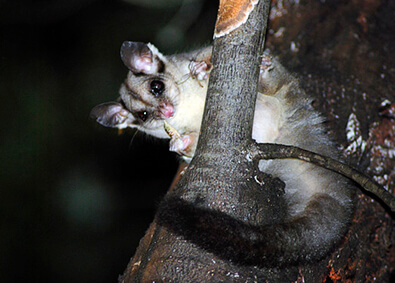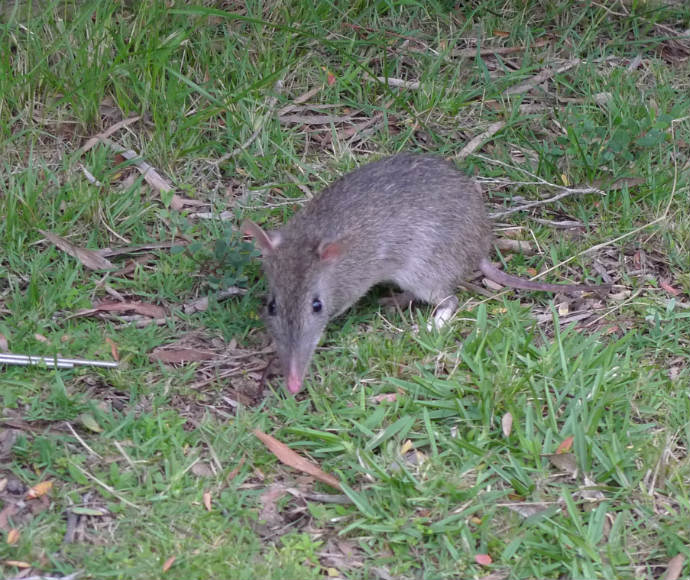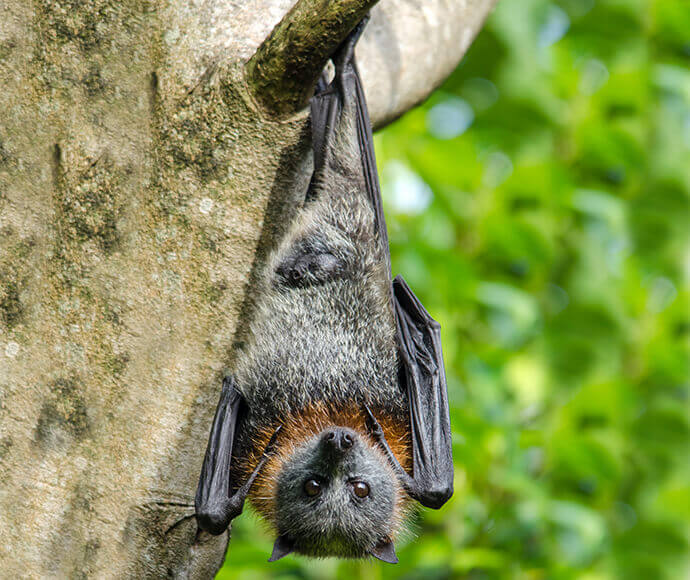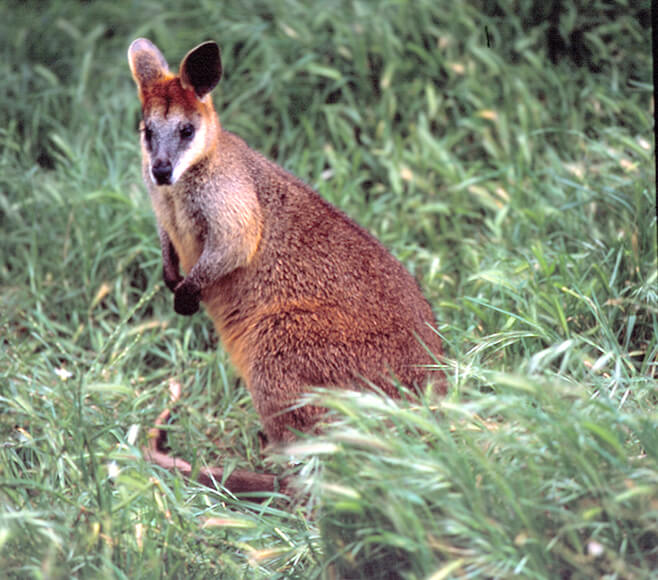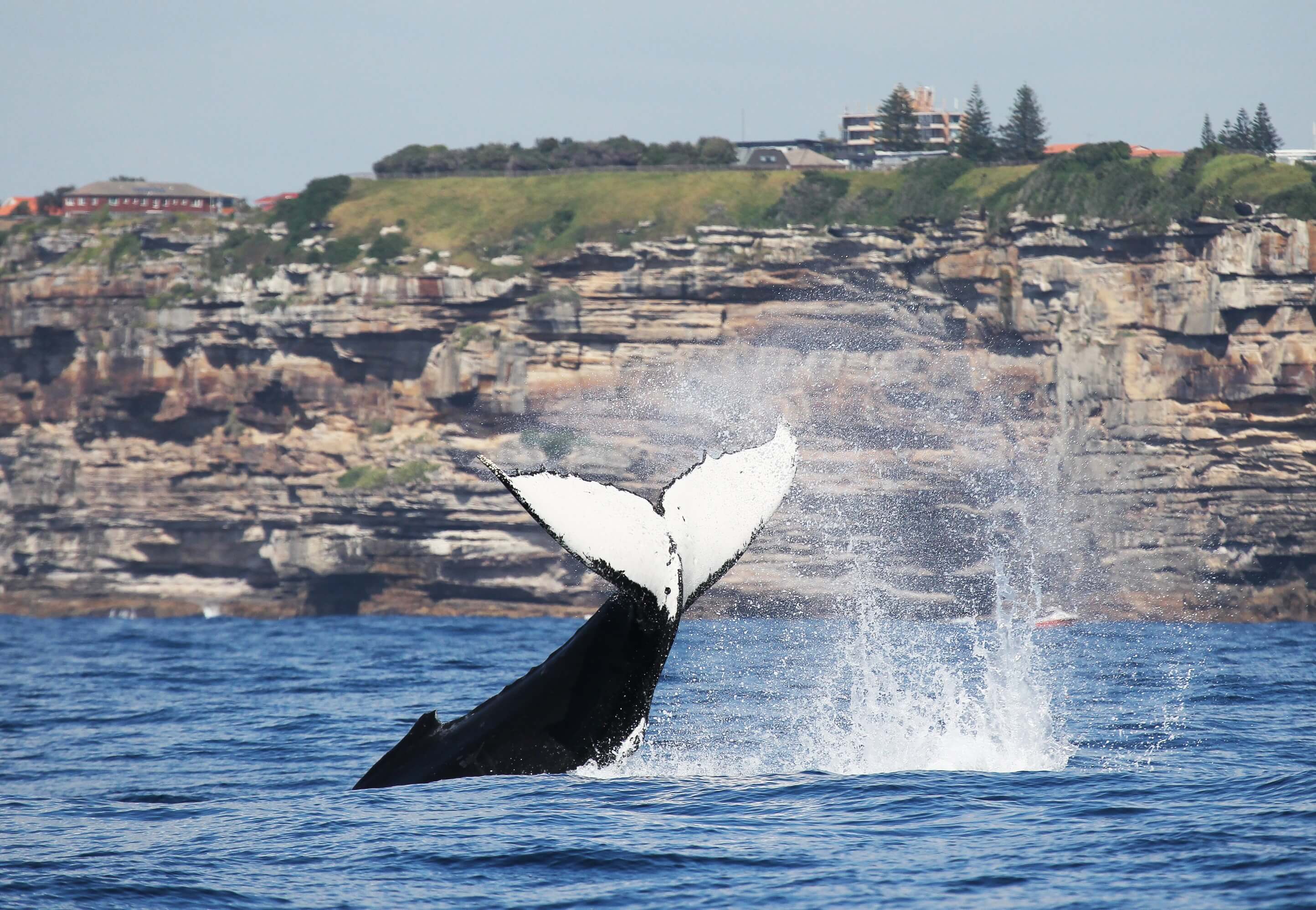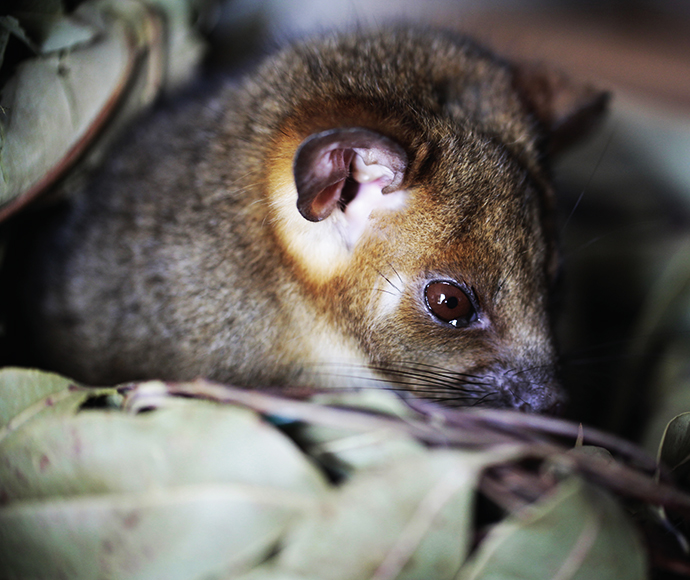Some wildlife has adapted to live alongside us in urban areas. Possums and bats often visit our gardens and parks, and you might even see a bandicoot in your garden.
If you're a Sydneysider with more bush around your home, you may share your space with wallabies, wombats, koalas and echidnas.
You can support our native residents by growing native plants to provide food and habitat for them.
Mammals you might see in your garden
Sydney and its surrounds are home to 8 nocturnal possums and gliders – from the mouse-sized feathertail glider to the cat-sized common brushtail possum. As their habitat shrinks and predators like cats increase in number, some of these species have become rare.
The world’s smallest gliding mammal, the feathertail glider lives in tall forests along the east coast of Australia, including Sydney. They have a ‘gliding’ membrane between their elbows and knees that allows them to travel between trees, using their feathery tail to steer. They mostly feed on nectar and pollen, but will also eat insects.
The eastern pygmy possum is another small, mouse-sized possum that lives in Sydney. Found in heath, open forest and rainforests, the eastern pygmy possum feeds on nectar, pollen and insects. This tiny possum is endangered, due to habitat loss and predation by dogs, cats and foxes.
Sugar gliders and the larger squirrel gliders have gliding membranes that extend from their fingers to toes. This allows them to glide up to 50 metres between trees. Both gliders eat nectar, pollen, gum produced by acacias, and insects. The sugar glider lives in open, moist forests in and around Sydney. The squirrel glider prefers drier forests and woodlands in and around Sydney. This species is rarer than the sugar glider and has been declared an endangered species.
The outskirts of Sydney are also home to two larger endangered gliders: the yellow-bellied glider and the greater glider.
The yellow-bellied glider is the size of a brushtail possum, but with a longer tail that helps it steer while gliding. It feeds on sap, pollen and nectar.
The greater glider is much larger than the yellow-bellied glider. It feeds almost only on eucalyptus leaves. Both species can glide up to 100 metres between trees. They are now rare in Sydney, but can be seen in the Blue Mountains area.
Some of the larger possums, like the brushtail and the smaller ringtail possums, have adapted to live alongside us. They often visit our gardens for food and shelter. They mainly eat leaves, but will also eat fruit and flowers.
The brushtail possum prefers to live in tree hollows, but with less of these around, some move into our roofs. Ringtail possums make nests of bundled leaves, called dreys, and live high up in trees.
Find out more about brushtail possums and other possums, including how to make a possum nest box.
Bandicoots are rabbit-sized marsupials. They live in shallow nests under shrubs or houses during the day. At night they may visit your garden in search of worms, insects and spiders. You might see the cone-shaped holes they make when digging for food in your garden.
Once common throughout Sydney, bandicoots have suffered from habitat loss, injury from cars, and predation by dogs and foxes.
The long-nosed bandicoot was once widespread across Sydney but is now a threatened population in Manly and the inner west.
The endangered southern brown bandicoot lives on the north shore near bushland.
The grey-headed flying-fox is the largest bat in Australia. Flying-foxes play a vital role in maintaining healthy forests. They spread pollen that sticks to their fur, and help spread the seeds of our native fruit.
As land has been cleared, these bats have moved into parkland and bushland near our homes, sometimes causing problems with their noise and smell.
Flying foxes can become injured or stressed by heat and need extra help in emergencies.
Sydney has many micro-bats too. Micro-bats are much smaller than flying-foxes and feed on insects. They sleep in tree hollows and old buildings during the day and emerge at dusk.
Most micro-bats go about their business quietly, except for the white-striped freetail bat which makes a high-pitched click or call when hunting – it is using echolocation or ‘bio-sonar’.
There are 19 microbat species in Sydney and 9 of these are threatened species, for example the endangered Southern myotis. Some of our microbats have adapted to our urban landscape, but most need open spaces with dark areas to forage and for refuge.
Lots of other animals compete for space in Sydney. You can help bats by:
- installing nest boxes
- adding more native trees in your garden and in green spaces
- not using poisons in your garden as it will kill their insect food.
If you live near bushland on the fringe of the city or are lucky enough to live near a national park, you may get the occasional eastern grey kangaroo or swamp wallaby visiting your garden, especially in times of drought.
Eastern grey kangaroos mostly eat grass and graze in grassy woodlands in western Sydney. Swamp wallabies live in heathland and moist forests that surround the city.
Kangaroos and wallabies feed on grass on road verges, and many are unfortunately hit by cars.
Find out more about living with kangaroos.
You won’t see them in your garden, but if you have a view of Sydney’s coast you may spot one swimming by.
Each year, humpback and southern right whales migrate along the New South Wales coastline during June and early July as they head north to breed in warmer waters. They return south to Antarctica from around September to November, with calves in tow.
Minke whales and orcas are occasionally spotted, too.
Sydney and its surrounding coastline provide some of the best vantage points – lookouts, headlands and foreshores – to spot the ocean’s most majestic creatures on their annual migration.
The NSW National Parks and Wildlife Service recommends these 5 whale watching spots in and around Sydney:
- Cape Solander, in Kamay Botany Bay National Park
- North Head, Manly
- South Head, Watson’s Bay
- Barrenjoey Headland, Palm Beach
- The Coast Track, in Royal National Park.
Help our native mammals
How we can live alongside our native mammals:
- share some of your garden with possums
- create nest boxes for possums, gliders and micro-bats
- don't use poisons in your garden
- keep your cats inside at night and your dogs on a leash
- drive slowly near bushland at dawn and dusk, especially when you see wildlife signs
- help gather data for WomSAT and learn more about our declining wombats
- help scientists learn more about echidnas by letting them know if you see one
- help animals in an emergency.
Make a possum drey
Ringtail possums live in a nest that resembles a ball of sticks and leaves that’s called a drey. You can help ringtail possums across Sydney by making a drey to put in your garden. Follow these steps to create a drey:
- tie 2 metal-framed hanging baskets (lined with coconut fibre) together with wire or cable ties
- cut and bend the wires at one end to create a space for an entry hole – about 10 centimetres in diameter
- weave leaves and bark through the wire to create a natural look
- hang your drey in a tree or shrub in a protected area.
Threatened koalas of Sydney
The koala features in many of the Dreaming and Creation stories of Aboriginal people and is one of our iconic species.
Many of us would love to see more koalas nestled in a eucalypt tree, but koala habitat and their numbers are shrinking. Koalas are now a threatened species in New South Wales, and they only produce one young or joey per year so recovery of populations is slow.
Koalas mostly move around and feed at night, and they are fussy eaters. They will only eat leaves from selected types of eucalypt trees. The leaves are relatively low in nutrients, can be loaded with toxins and take a lot of energy to digest, so koalas often spend up to 20 hours a day sleeping.
Koalas shelter in trees that may be different to those they eat from. A tree may be chosen to give them shade or protect them from predators. Koalas will hug the trunks of big trees on hot days to cool themselves down.
As temperatures rise, the Blue Mountains will be an important refuge for koalas. The Blue Mountains Koala project has some creative ways of helping koalas.
You can help protect koalas too:
- Slow down when driving near bushland, to help wildlife safely cross the road.
- Don’t bring dogs into national parks – it’s illegal.
- Keep your dog on a leash in bushland.
- Report sick or injured koalas to WIRES online or call 1300 094 737.
- Contribute your own koala sightings.
Helping feathertail gliders with habitat
An educational program on feathertail gliders is helping primary and secondary school students in Sydney’s northern beaches learn how to support this protected native mammal.
Students learnt about feathertail gliders, their habitat and threats, including different plant communities that create habitat, how to survey animals and indigenous land management.
Native plants were given to the schools and students helped weed and plant local areas to generate habitat for native animals. Nest boxes installed at some schools provide extra homes for feathertail gliders and allow students and project partners to monitor their progress.
As part of the project students present their findings using books, poetry, 3D models, video, websites, debates, music and song, interpretive dance, posters, and more to Taronga Zoo and their project partners.
Taronga Zoo partnered with Northern Beaches Council, the former Office of Environment and Heritage and Local Land Services to deliver the program.
Share your pictures
Share your pictures across social media and show us what you’re doing to help Sydney’s native plants and animals.
#sydneynature
#ilovesydneynature
#natureforall
